OCA (Optical Clear Adhesive) is a special type of double-sided adhesive with an optically clear and transparent layer, belonging to the class of pressure-sensitive adhesives. It is colorless, highly transparent with a light transmittance of over 90%, and has good adhesive strength. It can be cured at room or moderate temperatures, and has minimal curing shrinkage.

What is OCA Full Bonding Technology?
Full bonding technology is the current mainstream development trend for the bonding of high-end smartphones and tablet panels. It involves seamlessly bonding the panel and touch screen together, providing better display effects and eliminating screen dust. In contrast to conventional bonding methods, which are susceptible to environmental dust and moisture, full bonding OCA optical adhesive fills the gaps between the display panel and touch screen, preventing dust and moisture from entering and maintaining screen cleanliness.
Properties of OCA Optical Adhesive
High bonding and peeling strength, suitable for bonding many transparent thin film substrates to glass, with resistance to high temperature, high humidity, and UV light, and can be cured at room or moderate temperatures with minimal curing shrinkage.
Controlled thickness, providing uniform spacing.
Good durability, non-yellowing, no delamination or degradation.
Light transmittance >92-99%.
Refractive index of 1.48.
Low haze at 0.1%, low acidity.
Strong adhesion to smooth or textured surfaces.
Primary Materials
The specific materials and brands used depend on the requirements. Regardless of whether the materials come from a supplier as mother rolls or pre-cut materials, adequate protective measures must be taken to prevent the OCA material from being compressed. Some equipped die-cutting factories can cut the materials into strips according to the required specifications, and can make their own material racks to pass the material through the core and suspend it in the air.
Storage Conditions
Environment: It is best to store in a dust-free room, and each roll of material should be covered with a film.
Temperature: 22±4 degrees Celsius.
Humidity: 40%-60%.
Storage: Vertical or suspended to avoid pressure marks on the OCA.
Analysis of Full Bonding Technology
The composition of a mobile phone screen consists of three parts: protective glass, touch screen, and display screen. The bonding methods are classified into full bonding and frame bonding. Full bonding OCA applications include CTP structures: On/In cell, OGS, GF/GFF.
Adopting OCA technology requires secondary bonding, which involves attaching Sense glass to PSA and attaching Sense glass to Cover glass. The first step involves attaching the OCA film to the sensor, commonly referred to as soft bonding to hard bonding.
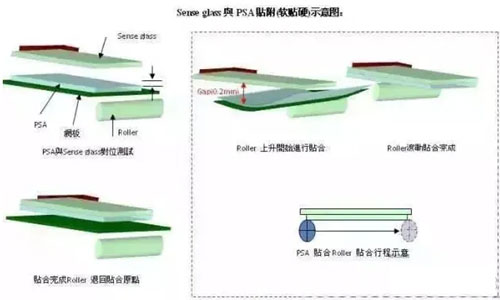
The second step involves attaching the sensor glass covered with OCA film to the cover glass, commonly known as hard bonding to hard bonding.
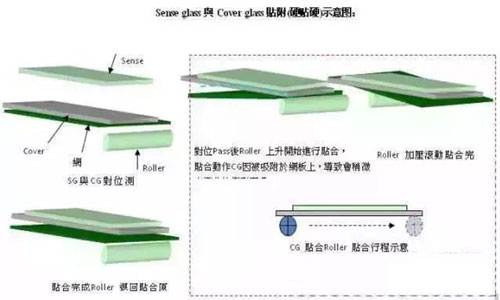
Soft attachment to hard surface

Manually place the sensor on the device surface, manually remove the isolation paper on the upper layer of the OCA (can be made easier by using a small piece of tape to stick to it), and then the device automatically aligns and completes the attachment.
Hard attachment to hard surface
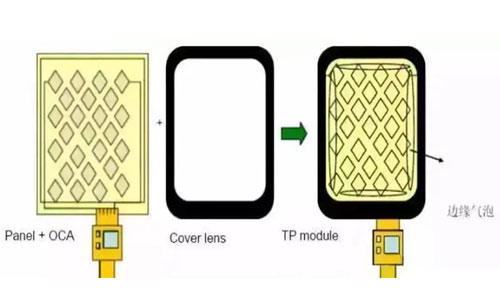
Manually place the cover glass and the sensor glass with OCA on the corresponding surface of the device, and after automatic alignment by the CCD, pressurized bonding is carried out in the vacuum chamber.
Analysis of the technology selection for full bonding with OCA technology
Analysis of Full Bonding OCA Technology Selection
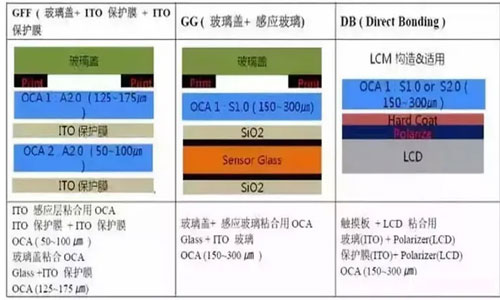
OCA Product Structure
Currently, the market frequently offers the following OCA product structures, depending on the assembly design of the TP factory.
Structure One: This type of structure is more commonly used by major smartphone TP factories such as TPK and Chimei. It requires film switching, has higher material and environmental requirements, and may incur higher costs.
Structure Two: Similar to structure one, it also requires film switching and has the same high material and environmental requirements, with the only difference being the absence of cutting the heavy release film and the absence of a carrier.
Structure Three: From the heavy release film surface to the light release film surface, it is partially cut to the light release film. From the perspective of materials, there is no need for a carrier or film switching, saving on the high cleanliness requirement and cost of the light release film. From a quality perspective, the absence of film switching means that foreign objects and dirt can be ignored, unless there is a material defect.
Drawbacks of OCA Technology
The surface of OCA adhesive film has adhesiveness, leaving marks when peeling off the release film and causing bubbles during bonding. It easily attracts dust and impurities, leading to secondary contamination.
During the bonding of OCA adhesive film with FILM, uneven manual pressure can lead to wrinkles and bubbles, while bonding with G+G requires a vertical pressure combination machine. Additionally, it is difficult to remove air under heating and pressure, resulting in the generation of bubbles, with little effect from the debubbling machine.
OCA has poor flowability, making it difficult to fill the grooves or ink of ITO lines during the bonding with Sensor or cover glass.
The bonding performance of OCA is not strong, posing a risk of rebound for properly bonded products.
For large-sized bonding, OCA is not conducive to production efficiency and incurs high labor costs. It is difficult to use OCA for medium-sized (around 10 inches) G+G bonding, and it is even more challenging for large-sized bonding (e.g., 15.6, 48, and 72 inches). This results in low production efficiency and low yield rates.
After bonding with OCA, the strength and explosion-proof capability of the screen are not effectively improved. This is particularly evident in the bonding of OGS and explosion-proof films, where the screen becomes prone to damage.
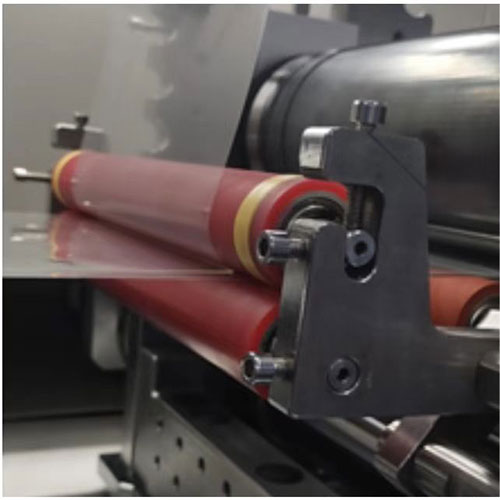
Advanced OCA Full Bonding Technology: Circular Blade Cutting Machines for Precision Integration
Exploring OCA Full Bonding Technology involves the intricate process of precision cutting and perfect bonding, aiming to achieve the highest quality in display manufacturing. This advanced technology combines precision cutting techniques with impeccable bonding methods to ensure seamless integration of Optical Clear Adhesive (OCA) films onto display panels. Through meticulous attention to detail and cutting-edge innovation, OCA Full Bonding Technology has revolutionized the display industry, delivering stunning visual experiences with flawless clarity and durability. Embracing this technology signifies a commitment to precision and excellence, propelling the industry towards new heights of quality and performance.
Contact: Pamela
Phone: +86 189 6365 3253
E-mail: info@industryprocess.com
Whatsapp:+86 189 6365 3253
Add: Yajing Industrial Park, No. 59 Shuangjing Street, Weiting Town, Suzhou Industrial Park
We chat
